Introduction
This workbook is designed to help you figure your loss on
personal-use property in the event of a disaster, casualty, or theft.
It contains schedules to help you figure the loss to your main home,
its contents, and your motor vehicles. However, these schedules are
for your information only. You must complete Form 4684 to report your
loss.
To help you figure your loss, the following schedules are included
in this workbook.
- Schedules 1 - 18, for listing the contents of your
home
- Schedule 19, Summary of Contents of Home
- Schedule 20, Loss on Personal-Use Real Property
- Schedule 21, Loss on Cars, Vans, Trucks, and
Motorcycles
- Schedule 22, Casualty or Theft Loss Deduction
To use this workbook, you will need the following items.
Publication 547.
Publication 547, Casualties, Disasters, and Thefts (Business
and Nonbusiness), explains the comprehensive rules for figuring
a loss.
Form 4684 and instructions.
Form 4684, Casualties and Thefts, is used to report your
casualty, disaster, or theft. You must attach it to your tax return
(Form 1040).
See How To Get More Information, later, if you need to
get this publication or form.
Losses
Generally, you may deduct losses to your home, household goods, and
motor vehicles on your federal income tax return. However, you may not
deduct a casualty or theft loss that is covered by insurance unless
you filed a timely insurance claim for reimbursement. Any
reimbursement you receive will reduce the loss. If you did not file an
insurance claim, you may deduct only the part of the loss not covered
by insurance.
Amount of loss.
To determine the amount of your loss, you must know the adjusted
basis of the property, and its fair market value (FMV) immediately
before and immediately after the disaster or casualty. If you bought
the property, your basis is usually its cost. If you acquired it in
any other way, your basis is determined as discussed in Publication
551, Basis of Assets.
FMV is the price for which you could sell your property to a
willing buyer, when neither of you has to sell or buy and both of you
know all the relevant facts.
You figure the amount of your loss using the following steps.
- Determine your adjusted basis in the property
before the casualty or theft.
- Determine the decrease in fair market value of
the property as a result of the casualty or theft. (The decrease in
FMV is the difference between the property's value immediately before
and immediately after the casualty or theft.)
- From the smaller of the amounts you determined in (1) and
(2), subtract any insurance or other reimbursement you
received or expect to receive.
Apply the deduction limits, discussed later, to determine the
amount of your deductible loss.
Separate computations.
Generally, if a single casualty or theft involves more than one
item of property, you must figure the loss on each item separately.
Then combine the losses to determine the total loss from that casualty
or theft.
Exception for personal-use real property.
In figuring a casualty loss on personal-use real property, the
entire property (including any improvements, such as buildings, trees,
and shrubs) is treated as one item. Figure the loss using the smaller
of the following.
- The decrease in FMV of the entire property.
- The adjusted basis of the entire property.
Deduction limits.
After you have figured the amount of your loss, as discussed
earlier, you must figure how much of the loss you can deduct. If the
loss was to property for your personal use or your family's, there are
two limits on the amount you can deduct for your casualty
or theft loss.
- You must reduce each casualty or theft loss by $100 ($100
rule).
- You must further reduce the total of all your losses by 10%
of your adjusted gross income (10% rule).
For more information about the deduction limits, see Publication
547.
When your loss is deductible.
You can generally deduct a casualty or disaster area loss only in
the tax year in which the casualty or disaster occurred. You can
generally deduct a theft loss only in the year you discovered your
property was stolen. However, you can choose to deduct disaster area
losses on your return for the year immediately before the year of the
disaster if the President has declared your area a federal disaster
area. For details, see Disaster Area Losses in Publication
547.
How To Get More Information
You can order free publications and forms, ask tax questions, and
get more information from the IRS in several ways. By selecting the
method that is best for you, you will have quick and easy access to
tax help.
Free tax services.
To find out what services are available, see Publication 910,
Guide to Free Tax Services. It contains a list of free tax
publications and an index of tax topics. It also describes other free
tax information services, including tax education and assistance
programs and a list of TeleTax topics.
Personal computer. With your personal computer and
modem, you can access the IRS on the Internet at
www.irs.ustreas.gov. While visiting our Web Site, you can
select:
- Frequently Asked Tax Questions to find answers to
questions you may have.
- Fill-in Forms to complete tax forms
on-line.
- Forms and Publications to download forms and
publications or search publications by topic or keyword.
- Comments & Help to e-mail us with comments
about the site or with tax questions.
- Digital Dispatch and IRS Local News Net
to receive our electronic newsletters on hot tax issues and
news.
You can also reach us with your computer using any of the
following.
- Telnet at iris.irs.ustreas.gov
- File Transfer Protocol at ftp.irs.ustreas.gov
- Direct dial (by modem) 703-321-8020
TaxFax Service. Using the phone attached to your fax
machine, you can receive forms, instructions, and tax information by
calling 703-368-9694. Follow the directions
from the prompts. When you order forms, enter the catalog number for
the form you need. The items you request will be faxed to you.
Phone. Many services are available by phone.
- Ordering forms, instructions, and publications.
Call 1-800-829-3676 to order current and
prior year forms, instructions, and publications.
- Asking tax questions. Call the IRS with your tax
questions at 1-800-829-1040.
- TTY/TDD equipment. If you have access to TTY/TDD
equipment, call 1-800-829- 4059 to ask
tax questions or to order forms and publications.
- TeleTax topics. Call
1-800-829-4477 to listen to pre-recorded
messages covering various tax topics.
Evaluating the quality of our telephone services. To
ensure that IRS representatives give accurate, courteous, and
professional answers, we evaluate the quality of our telephone
services in several ways.
- A second IRS representative sometimes monitors live
telephone calls. That person only evaluates the IRS assistor and does
not keep a record of any taxpayer's name or tax identification
number.
- We sometimes record telephone calls to evaluate IRS
assistors objectively. We hold these recordings no longer than one
week and use them only to measure the quality of assistance.
- We value our customers' opinions. Throughout this year, we
will be surveying our customers for their opinions on our
service.
Walk-in. You can pick up certain forms, instructions,
and publications at many post offices, libraries, and IRS offices.
Some libraries and IRS offices have an extensive collection of
products available to print from a CD-ROM or photocopy from
reproducible proofs.
Mail. You can send your order for forms, instructions,
and publications to the Distribution Center nearest to you and receive
a response 7 to 15 workdays after your request is received. Find the
address that applies to your part of the country.
- Western part of U.S.:
Western Area Distribution Center
Rancho Cordova, CA 95743-0001
- Central part of U.S.:
Central Area Distribution Center
P.O. Box 8903
Bloomington, IL 61702-8903
- Eastern part of U.S. and foreign addresses:
Eastern Area Distribution Center
P.O. Box 85074
Richmond, VA 23261-5074
CD-ROM. You can order IRS Publication 1796, Federal
Tax Products on CD-ROM, and obtain:
- Current tax forms, instructions, and publications.
- Prior-year tax forms, instructions, and publications.
- Popular tax forms which may be filled in electronically,
printed out for submission, and saved for recordkeeping.
- Internal Revenue Bulletins.
The CD-ROM can be purchased from National Technical Information
Service (NTIS) for $25.00 by calling 1-877-233-6767
or for $18.00 on the Internet at www.irs.ustreas.
gov/cdorders.
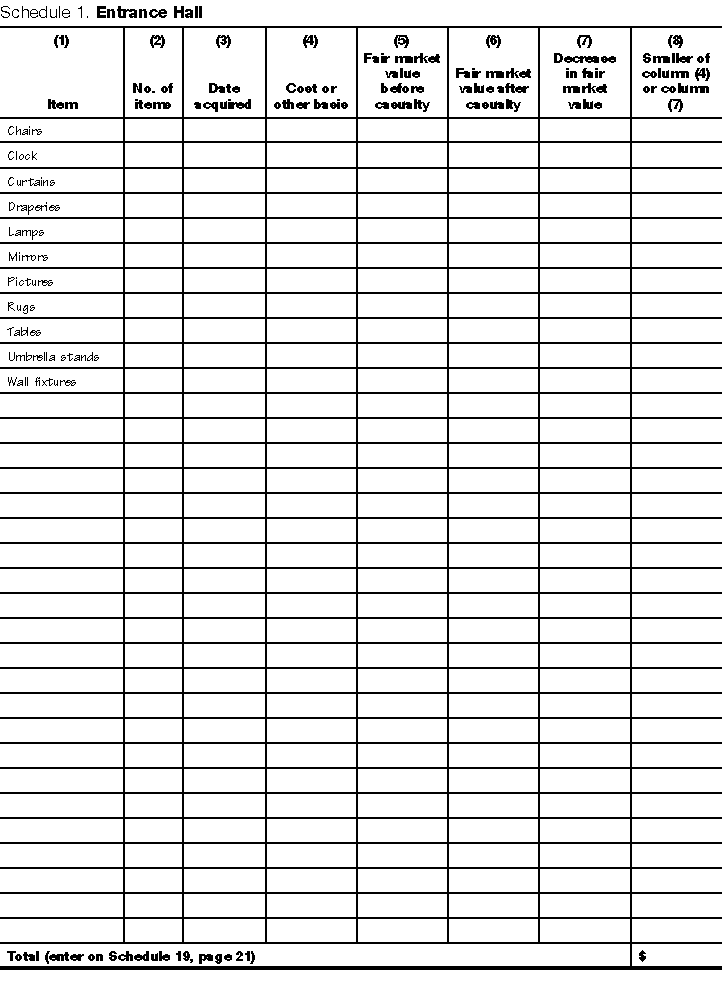
Entrance Hall
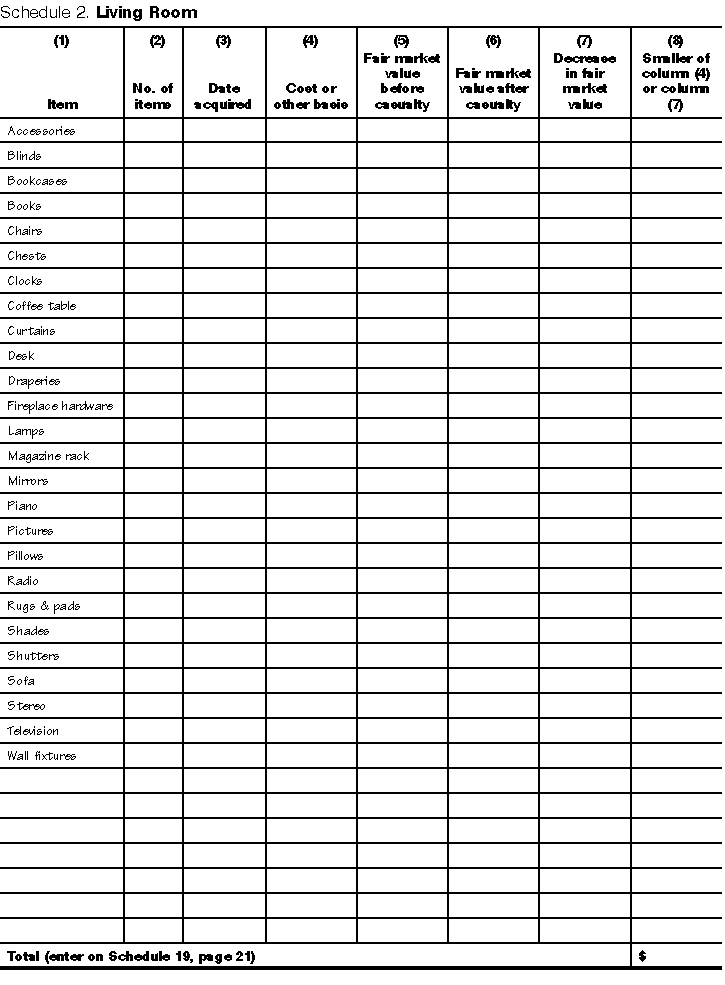
Living Room
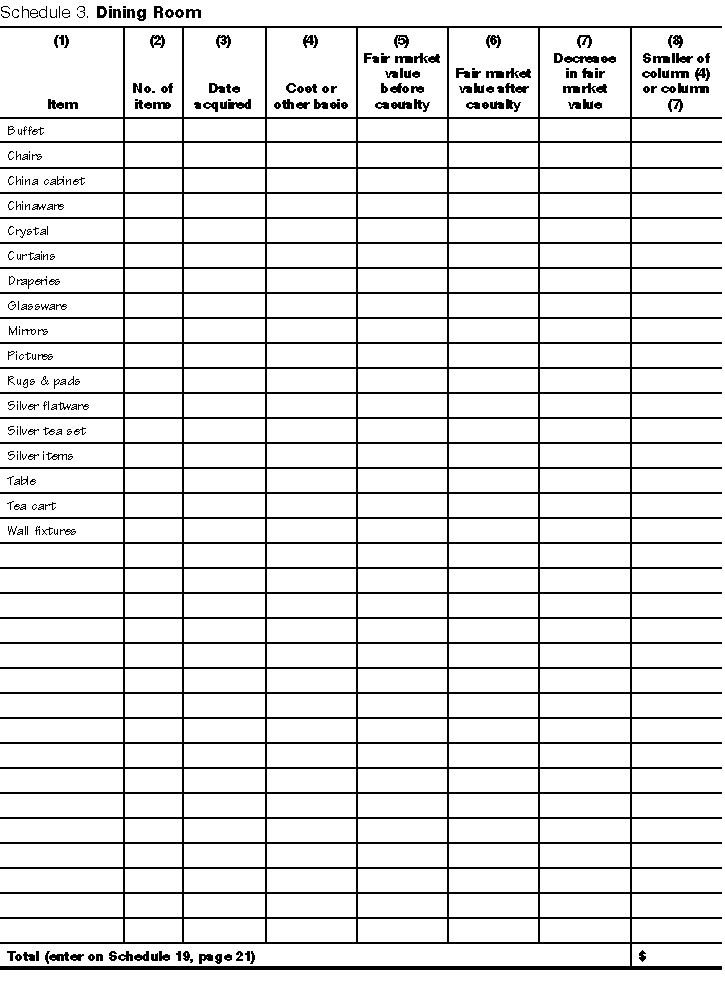
Dining Room
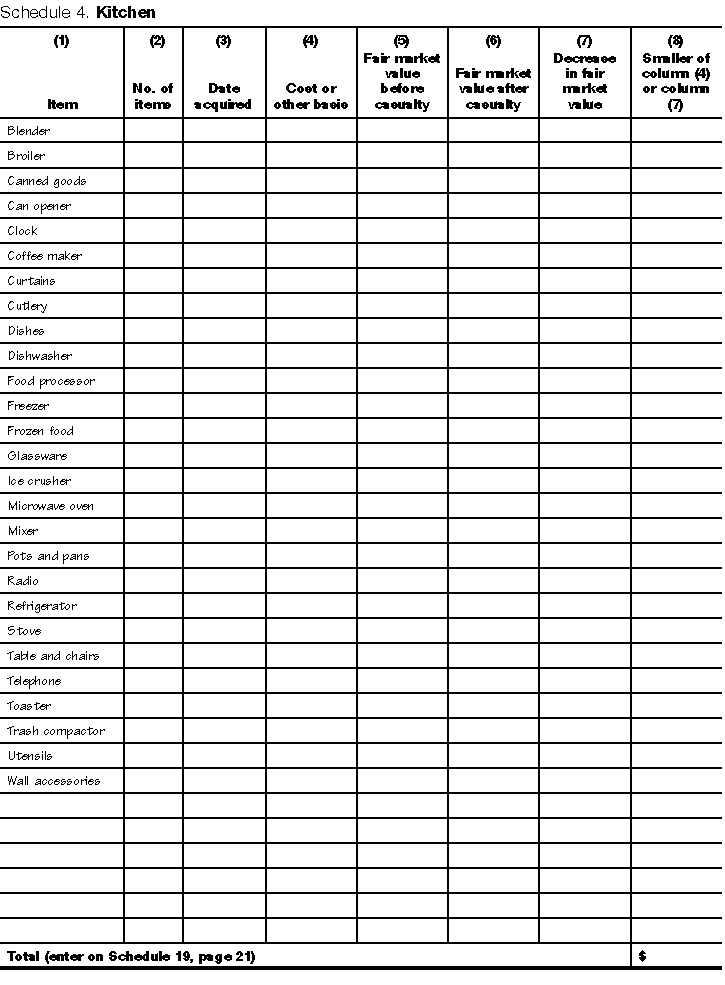
Kitchen
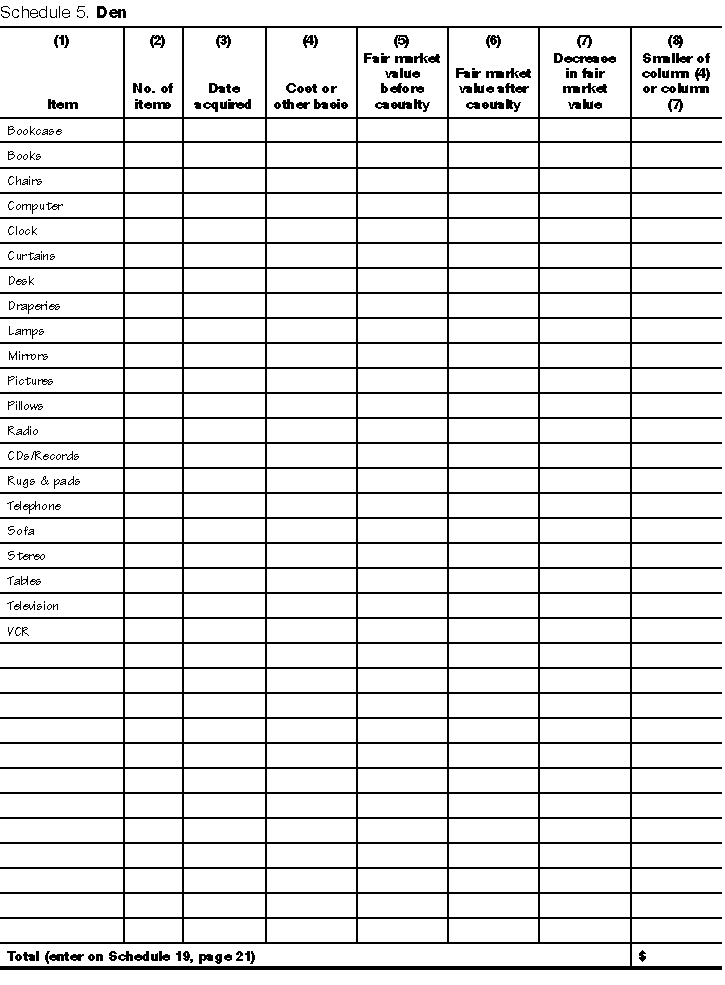
Den
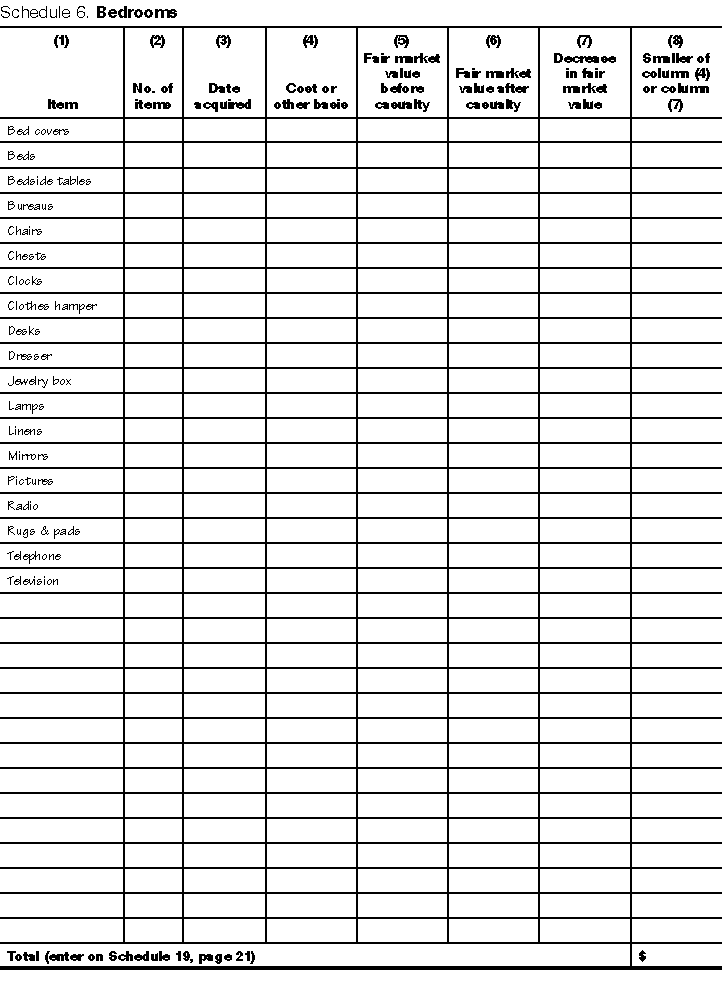
Bedrooms
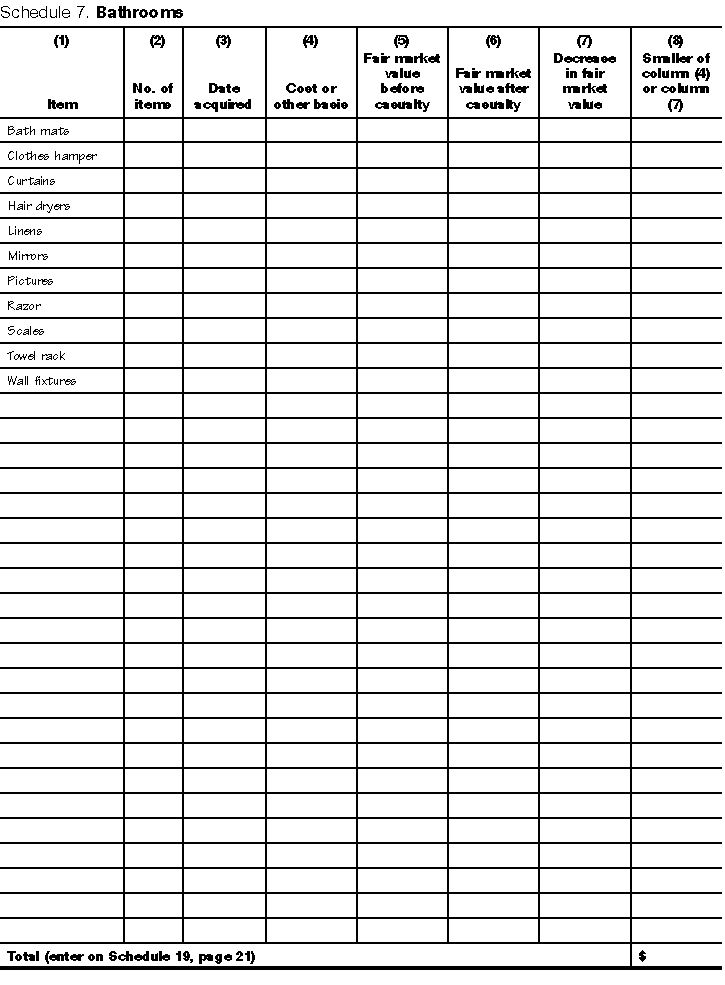
Bathrooms
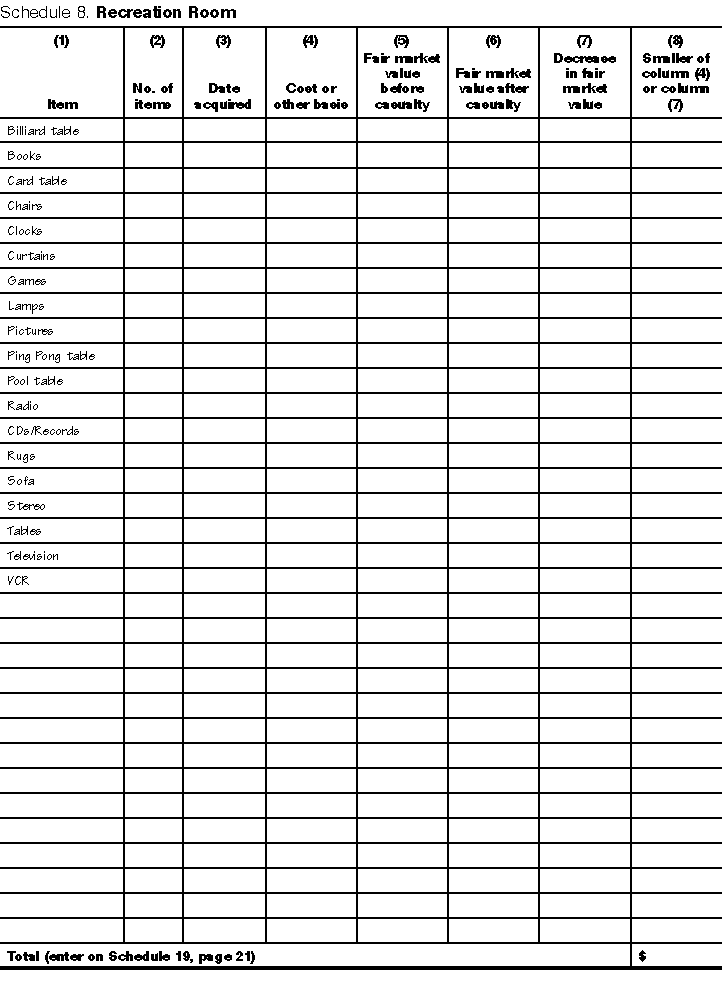
Recreation Room
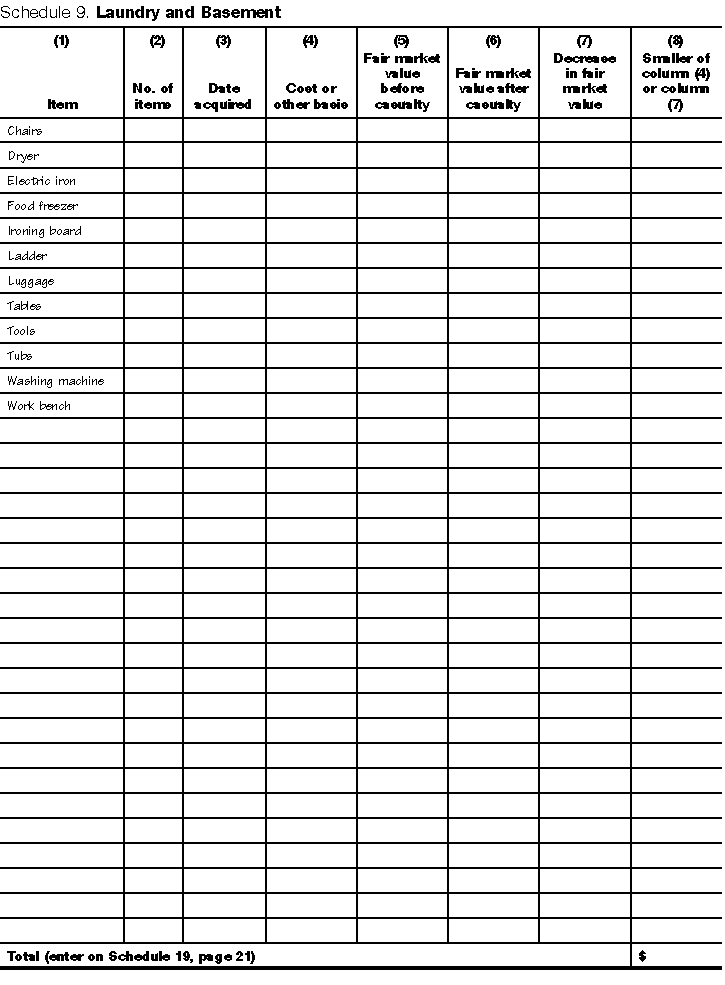
Laundry and
Basement
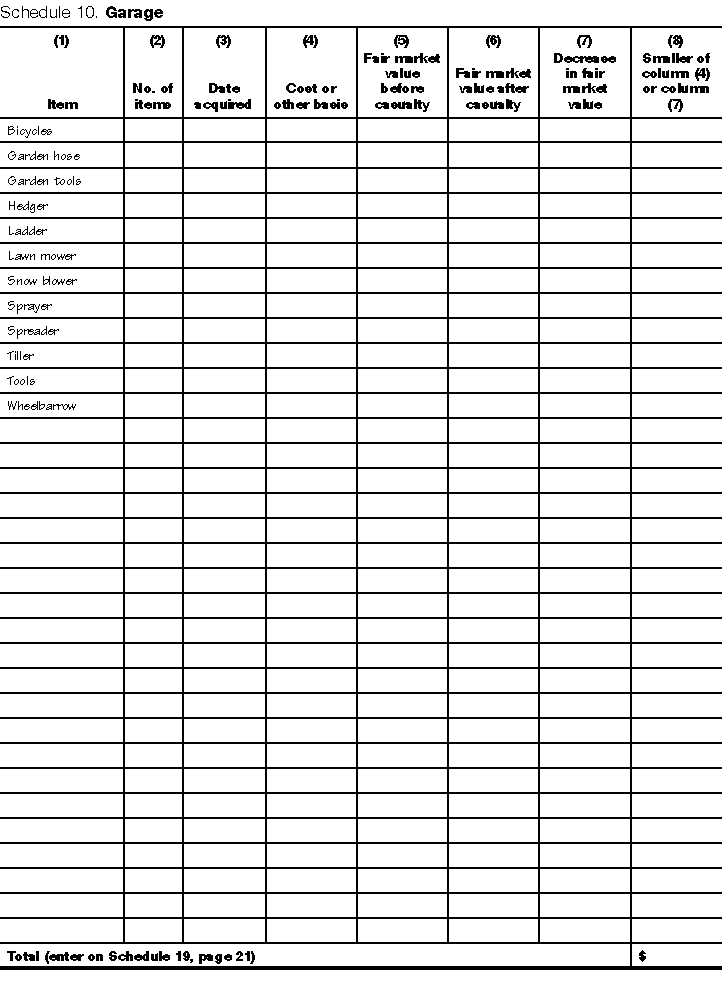
Garage
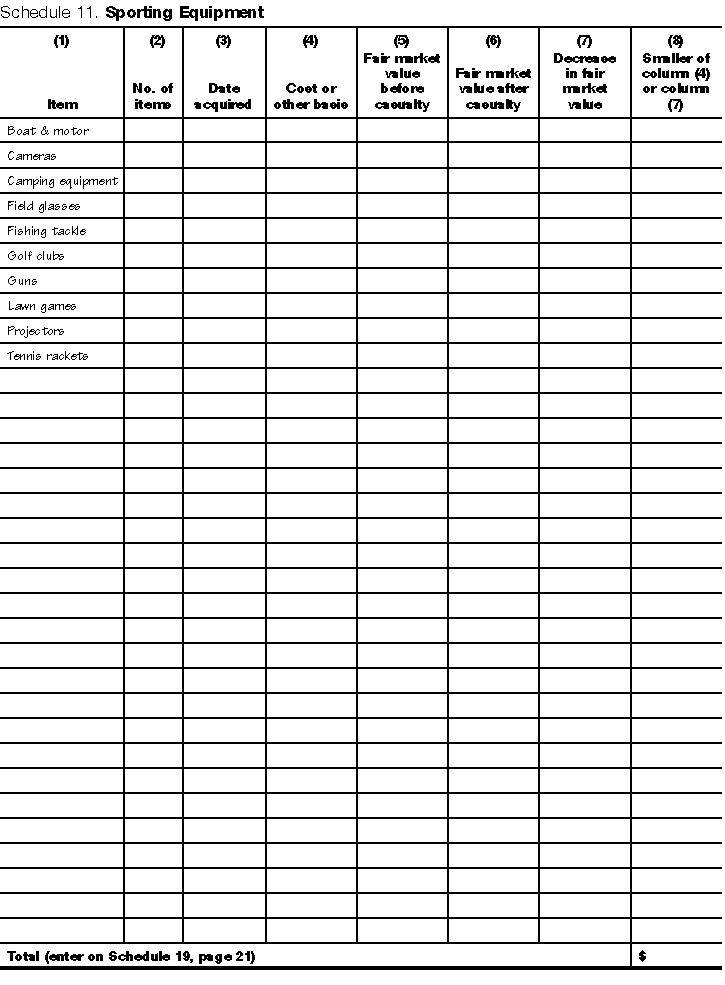
Sporting Equipment
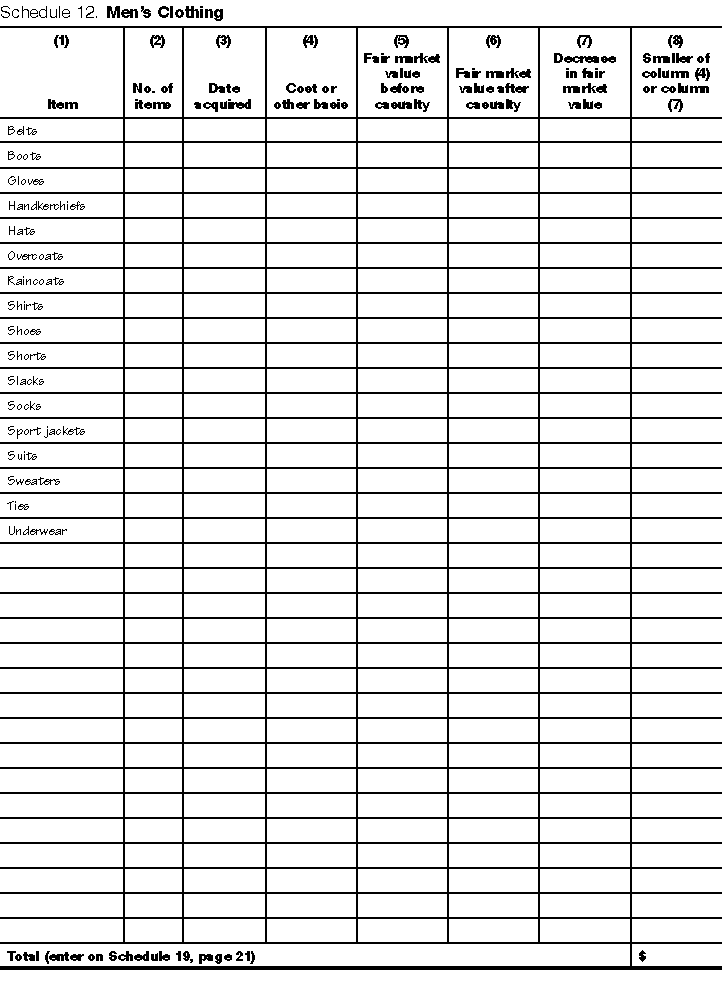
Men's Clothing
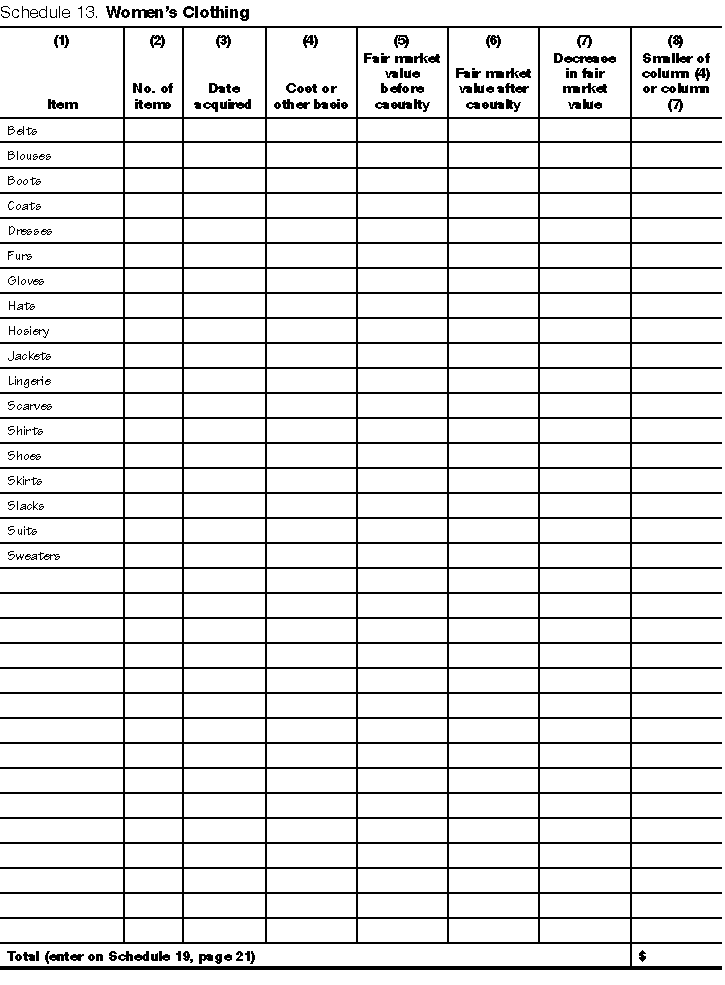
Women's Clothing
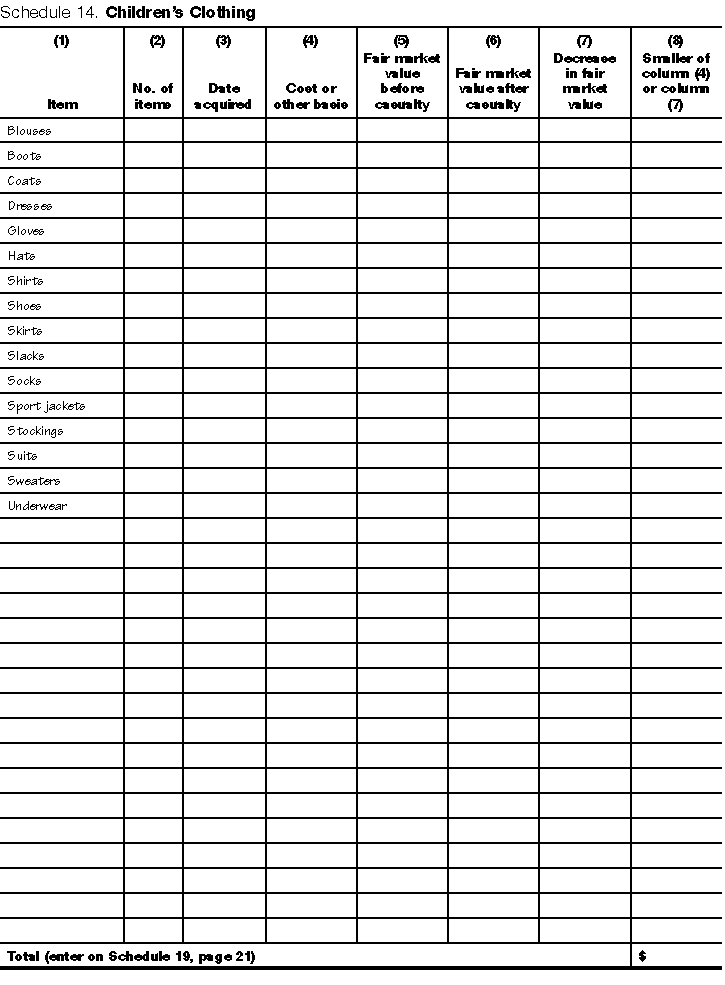
Children's
Clothing
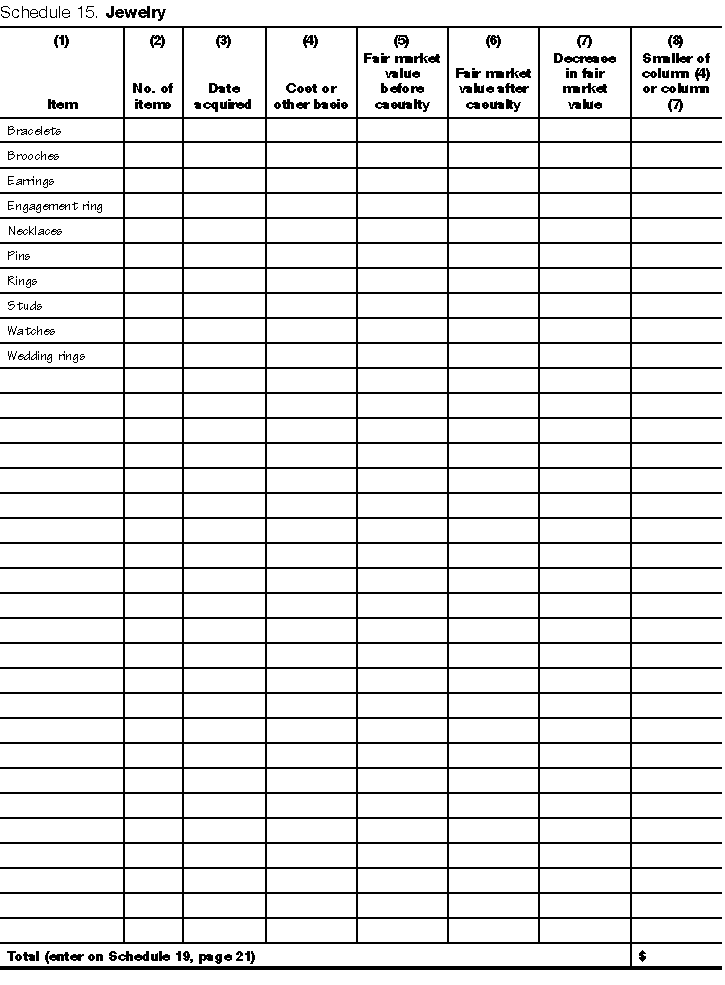
Jewelry
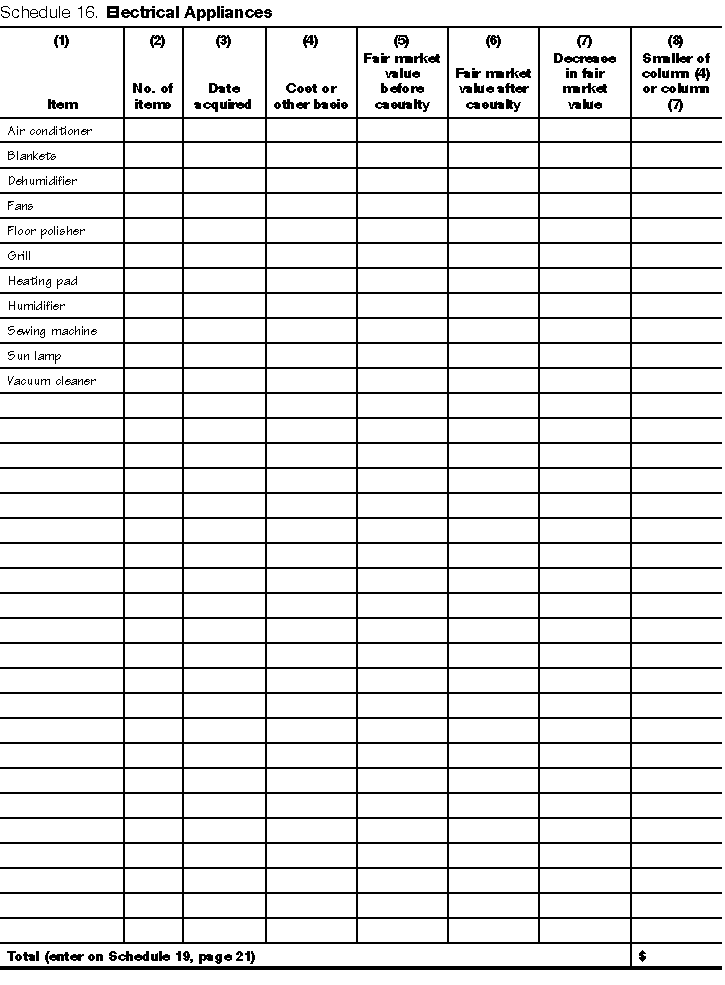
Electrical
Appliances
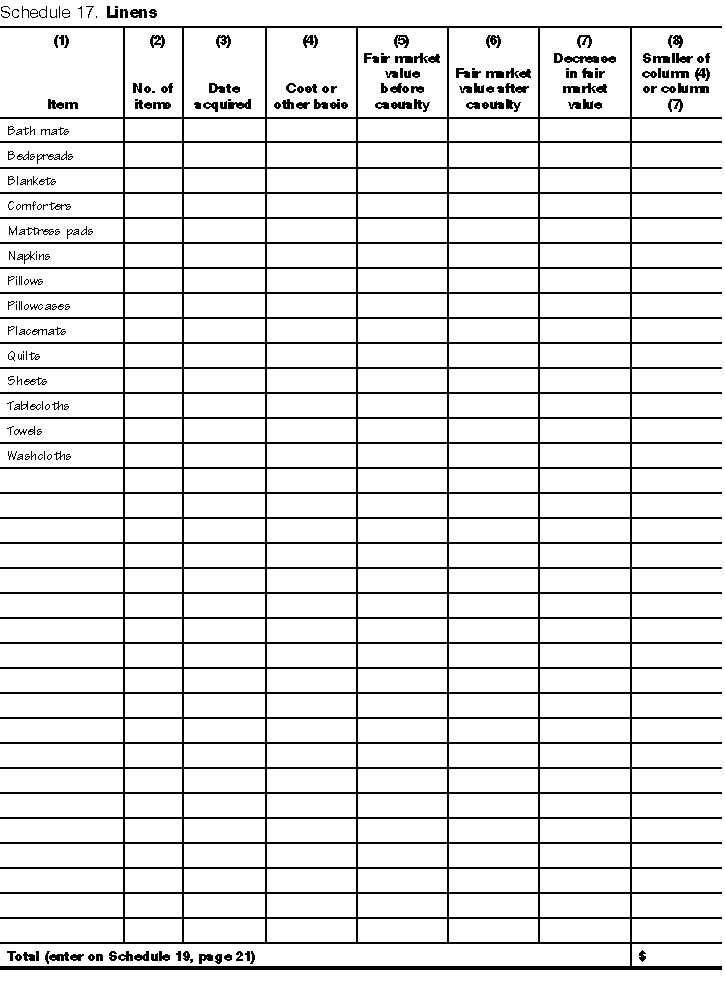
Linens
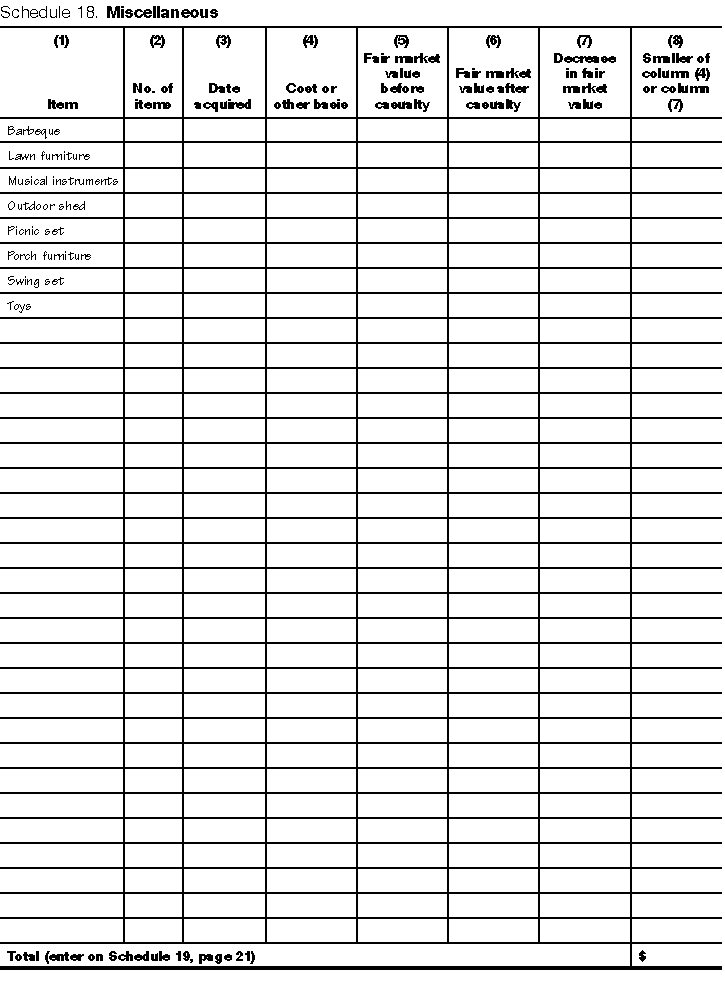
Miscellaneous
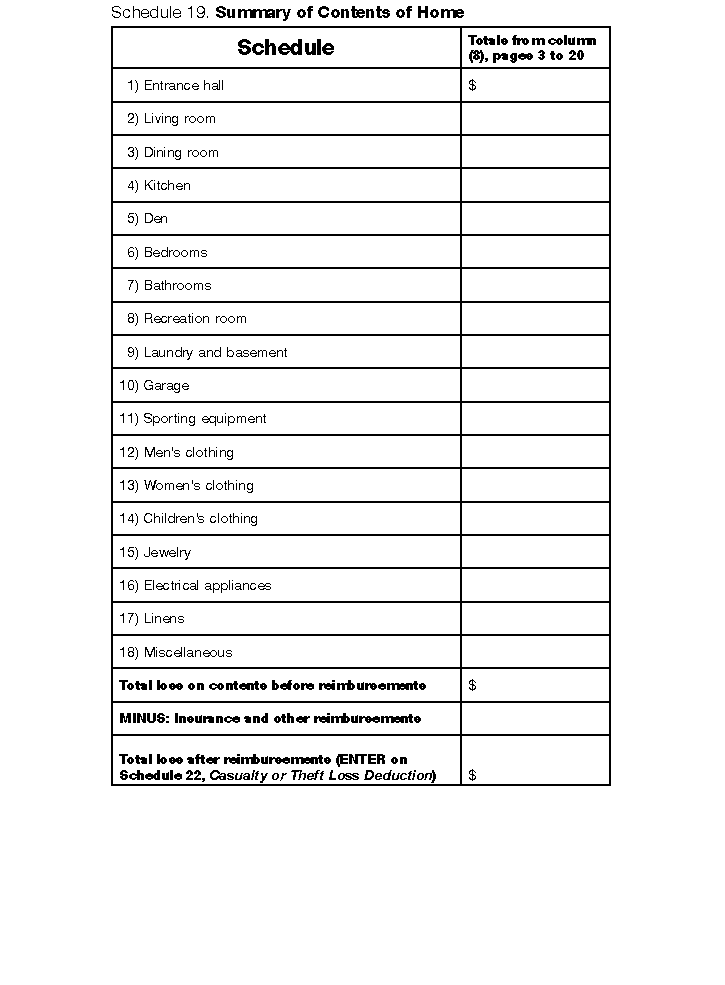
Summary of Contents of
Residence
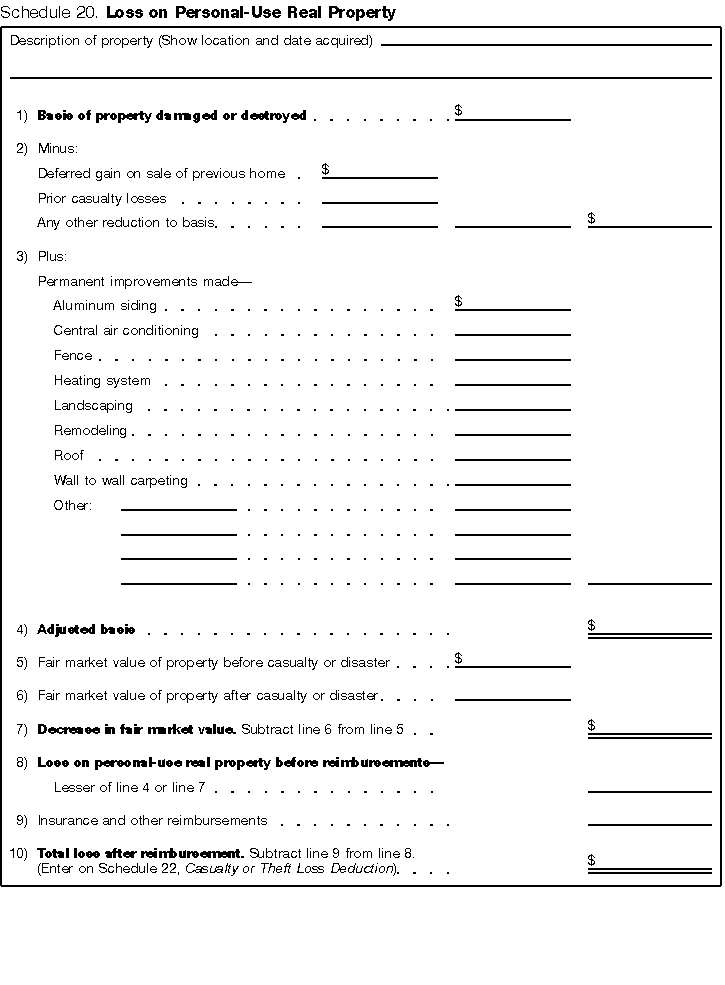
Loss on Nonbusiness
Real Property
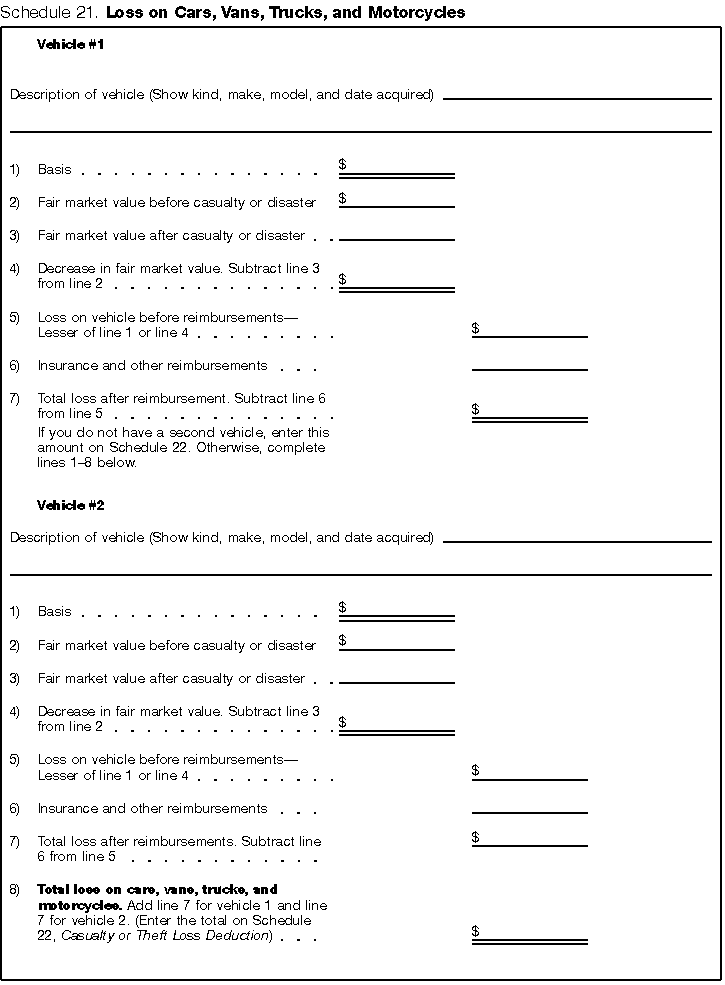
Loss on cars, vans,
trucks, and motorcycles
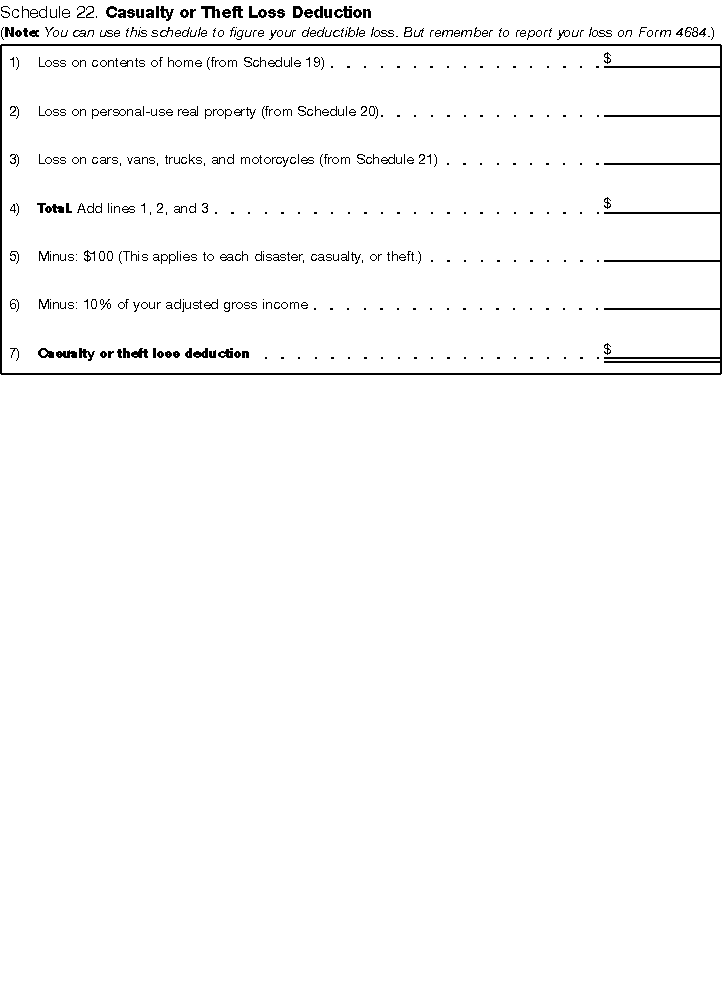
Summary
First
Publication Index | 2002 Tax Help Archives | Tax Help Archives | Home
